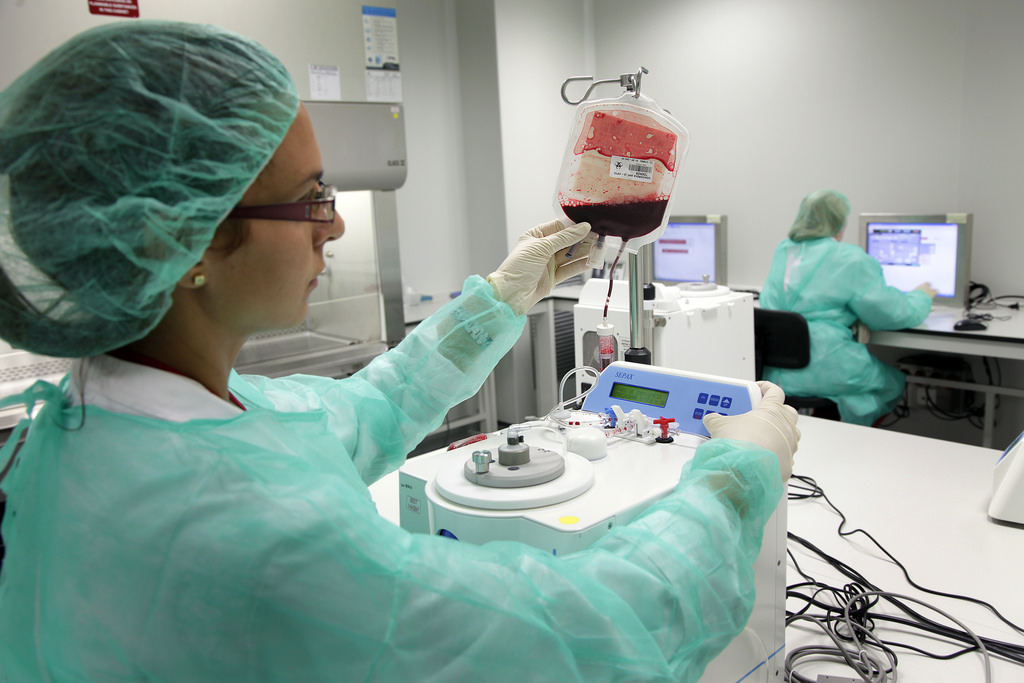Table of Contents
 Umbilical cord blood was once thought of as a waste product, but now it is valued for its content of stem cells.
Umbilical cord blood was once thought of as a waste product, but now it is valued for its content of stem cells.
Stems cells are undifferentiated cells which have the potential to differentiate into any other cell.
However, the history of Umbilical cord blood transplantation is not age-old, it’s a recent, around three decades old concept. Researches are being done to tap the potential of Umbilical cord for human health welfare.
When was the first Umbilical Cord Blood Transplantation done?
First umbilical cord blood transplantation was performed in France on a child suffering from Fanconi Anemia from stem cells transplantation of his younger sister’s umbilical cord.
In India, the first private cord blood bank was set up in 2004 by Chennai-based LifeCell in partnership with US’s Cryo-Cell International, one of the world’s largest and oldest stem cell banks. Since then there is blooming growth of private cord banks which are portraying themselves as the “biological guarantee paper” of the health of the unborn child. It is natural for a parent to easily fall prey to these traps because as a parent we all want to assure a healthy life for our child.
Keeping this in mind, is it worth the time, effort, and money to invest in private cord blood banking? Let’s see!
Types of Umbilical Cord Banks
Storage of Umbilical cord blood stem cells involves the collection of the umbilical cord after the birth of a child but before the placenta is delivered. Expectant parents have two options to opt for cord blood banking:
(1) Private cord banks: These companies work on a profit basis, offer services to expecting parents to store umbilical cord blood which they claim, can be used during any disease in the donor or related family. Private banks charge an initial fee for collection and processing and, then, a yearly maintenance fee. Another fee is often charged when a sample is removed for testing or treatment.
Is Umbilical Cord Banking Beneficial for your Kids?
There are two major fallbacks of the private cord banking:
- If your child has a genetic abnormality, cord cells will be genetically muted too. For example, in malignant cancers such as leukaemia which is due to the genetic mutations, would already exist in the DNA of the cord blood. So, using one’s own stem cells would be, in effect, “contaminating” oneself with the same disease process.
- Infant for whom the blood is banked will likely never need the stored blood and the blood is not accessible by the public for use. The chance that a child would be able to use his or her own cord blood is extremely small: from a 1:400 to a 1:200,000 chance over the child’s lifetime.
Use of Umbilical Cord Banking in Adults is Questionable
Standardization of Umbilical Cord Banking
As per studies, about one-fourth of all collected cord blood units meets the established criteria for storage.
- When used for transplant, the patient (usually a child) will need a minimum of 25 million cells per KG of body weight. Assuming the body weight is 20 KG, the number of cells required is more than 500 million cells.
- When the cells are taken out after storage for a period of time, approximately 20% of cells lose the function. Hence it is recommended to have more than 750 million cells to start with. More the viable cells, better the outcome.
- To get this number of cells, the amount of cord blood required will be more 70 ml.
- Also, the cord blood should not have any Wharton’s Jelly or clots.
Unlike public banks utilizing established criteria for storage in cord banks, private banks generally store all collected cord blood units.
Is it Possible to Cure Diseases with Umbilical Cord Banking?
The current indications for cord blood transplant are limited to blood cancers, like leukemia and lymphoma , Bone marrow diseases, like Fanconi anemia Certain anemia, like sickle-cell disease, aplastic anemia and thalassemia, certain immune system problems, like severe combined immune deficiency (also called SCID), Inherited metabolic problems, such as Hurler syndrome and leukodystrophies.
Trials for other diseases cure through cord cells are in an experimental stage like cerebral palsy, brain injuries, Diabetes and Parkinson’s disease etc.
Not all Pregnancies are Fit for Umbilical Cord Banking
I suspect that the private cord blood bank only shares information that is in its best interest to gain another customer. Following cases are not fit for cord banking.
– Mothers younger than 18 years old
– Mother has been treated for cancer or has received chemotherapy for another illness
– History of malaria in the last three years
– History of infectious diseases, such as hepatitis, human immunodeficiency virus, and syphilis.
– Pre-mature baby (there may not be enough blood to collect)
– delivered multiples (but it’s possible to bank your cord blood of multiples privately).
– The American College of Obstetricians and Gynecologists recommends that Umbilical cord blood collection should not compromise obstetric or neonatal care or alter routine practice for the timing of umbilical cord clamping.
How long umbilical Cord Blood will Maintain its Usefulness while Frozen?
According to research, cord blood stem cells can be maintained up to 15 years, but it is unknown if the cells would be preserved over the entire lifetime of a person. So what if a child gets a disease after this period?
The main aim of the article is not to undermine the importance of Umbilical cord blood. The umbilical cord blood stem cells offer higher chances of finding a match compared to bone marrow stem cells and are readily available at the time of need. Graft versus host reaction is lesser and also for people where it is difficult to get matched bone marrow, Cord cells are a boon. However, most of the expecting parents are uninformed or under-informed about the issue of cord blood banking. Parents should be informed about umbilical cord blood banking should be free from bias.




